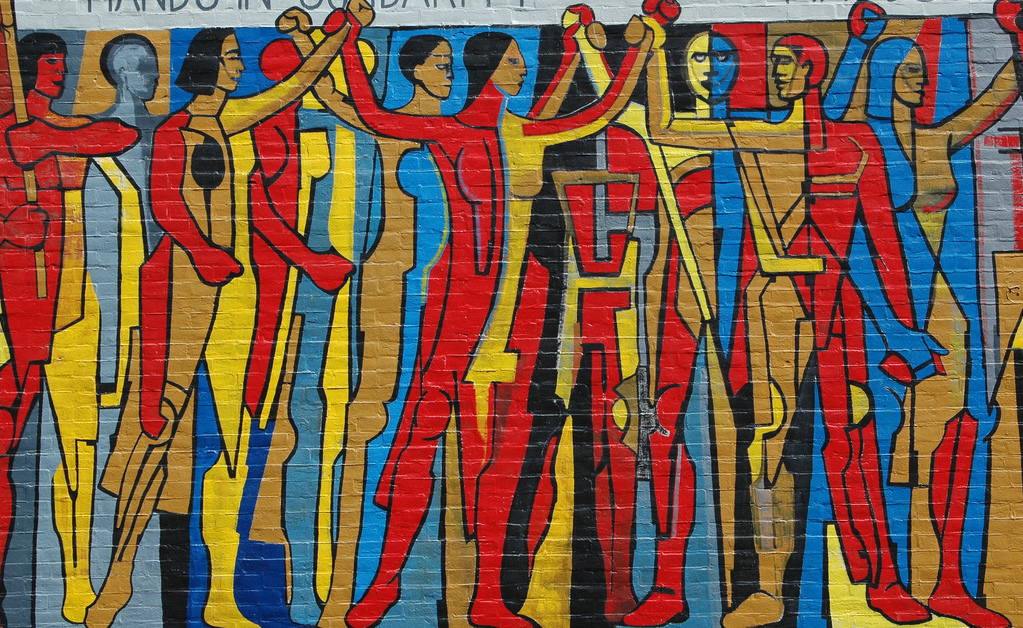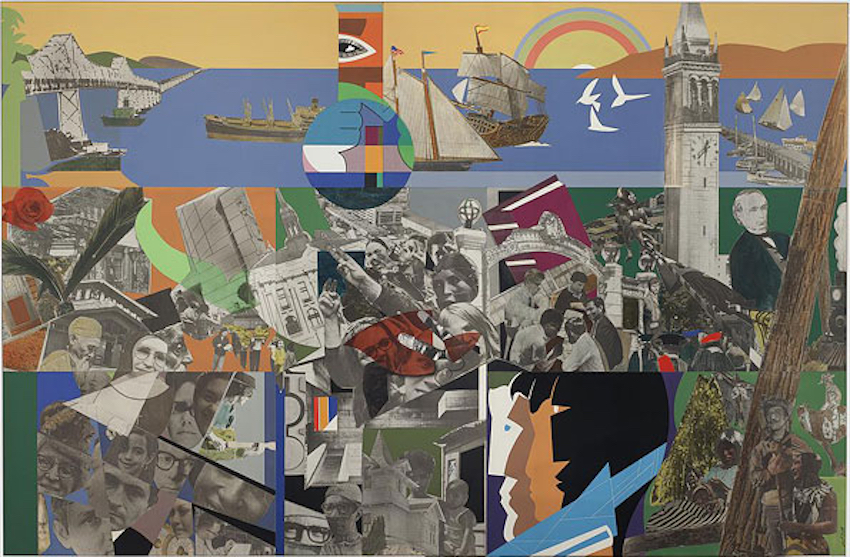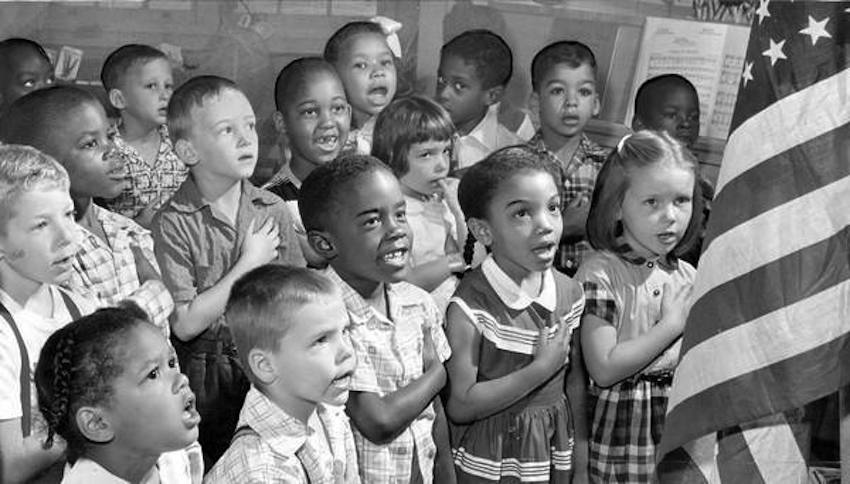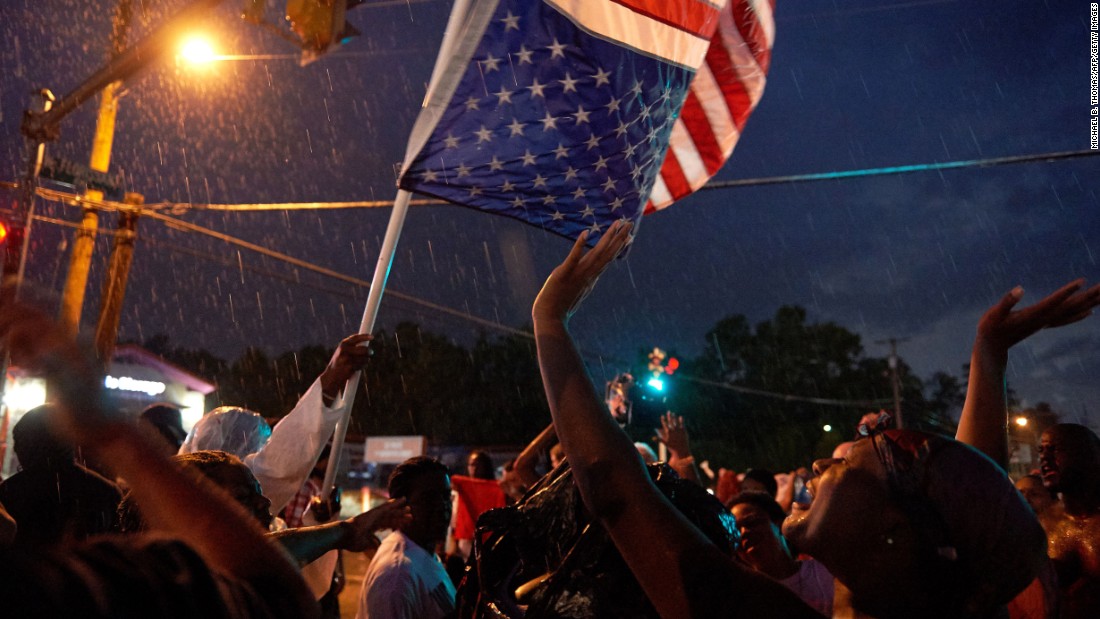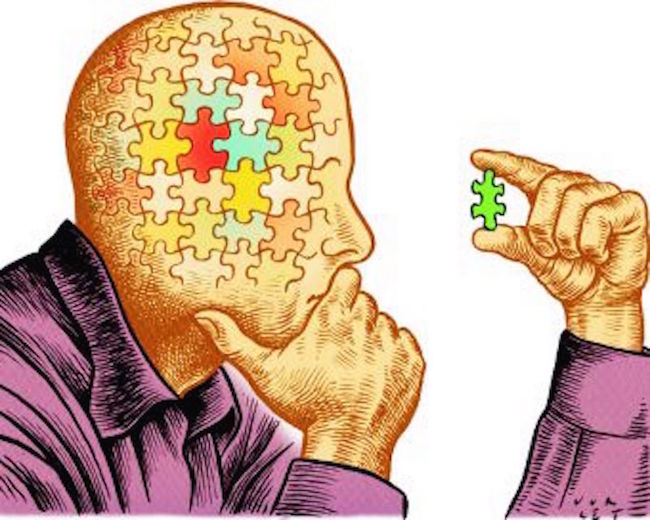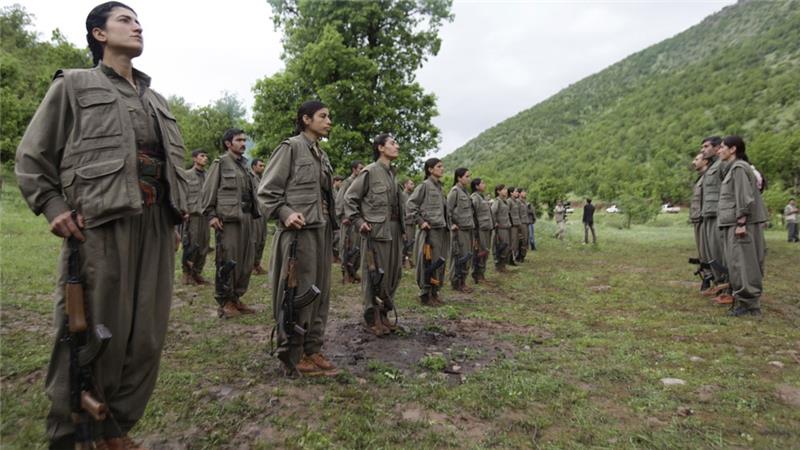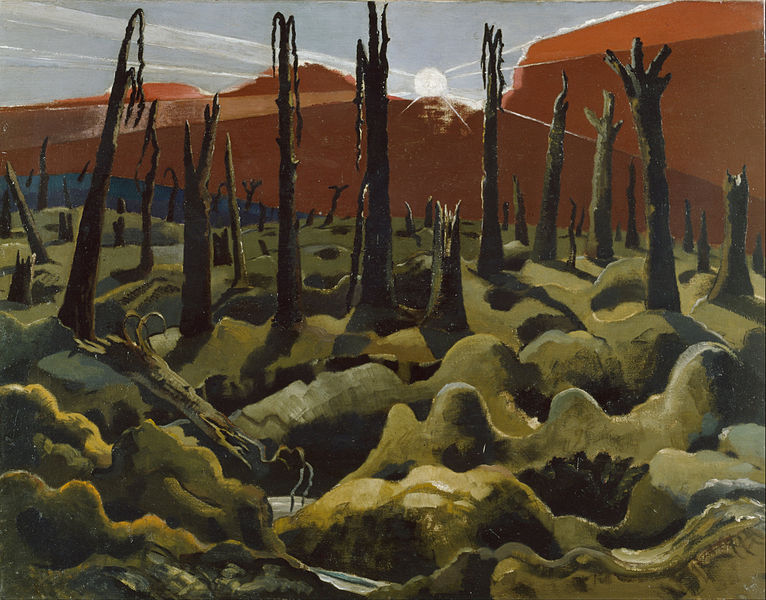James Boggs: Towards a New Concept of Citizenship
This pamphlet was accessed from the Boggs Center’s website.
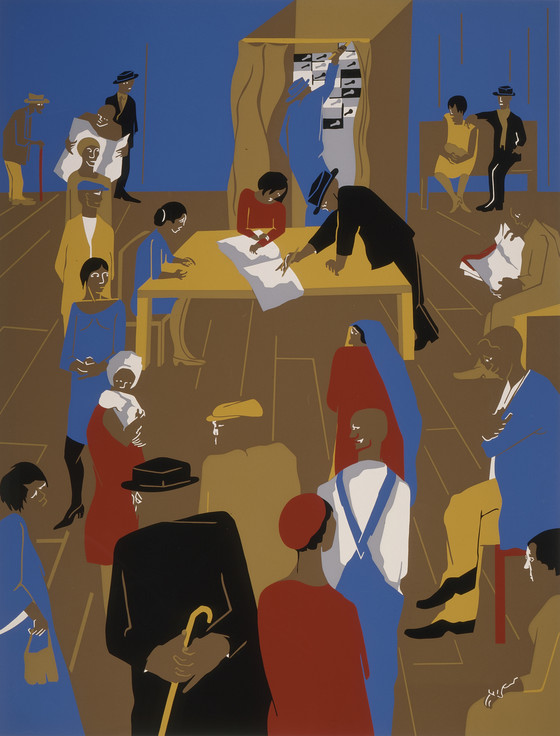
Jacob Lawrence. The 1920’s…The Migrants Arrive and Cast Their Ballots. 1974
This speech was selected, edited, and prepared for publication by Alternatives, Detroit based organization which no longer exists. They wrote the introduction, did most of the basic work involved, and have financed its publication.
Introduction
This pamphlet was originally a speech given by James Boggs to the graduate class in the School of Architecture at the University of Michigan on November 9, 1976. However, it is of interest to all of us concerned with the rapidly deteriorating quality of life in this country. A few questions can highlight this situation: why is it that we cannot safely walk the streets at night when we are supposedly the most “civilized” society in the world? Why do we often pay the price of leaving behind old friends and communities in order to advance to the next rung on the ladder of success? And why, in the age of mass media, do we remain ignorant of how the social and political decisions which affect our daily lives are made?
These contradictions have arisen out of our pursuit of individual economic interests to the exclusion of the public good. In order to reverse this trend, each of us must begin to question how our daily actions affect the larger community. We must also begin asking what kind of values we want these actions to represent. As we all know, America was founded by people who wanted to guide their own destiny and thereby became the modern world’s first citizens.
This pamphlet shows how important citizenship is in beginning to correct the problems we are facing today. Unless we once again begin the process of self government, decisions will continue to be made at the expense of the public good which is, ultimately, at our expense. Reading this pamphlet is a step towards creating a new concept of citizenship.
TOWARDS A NEW CONCEPT OF CITIZENSHIP
Last year when I spoke to this class, I talked about how, in the pursuit of individual success, millions of Americans have chosen the road of getting ahead in the economic arena. Therefore, we have become a nation of individualists who believe that the further we get away from the communities or areas where we grew up, the more successful we are. In other words, the greater the distance we put between ourselves and other individuals from our past, the more we have achieved. Most Americans believe this even if it means that we have to move every two or three years and live and work among strangers most of our adult life; even though it means that we, and particularly those of us who are women, have no relatives or childhood friends on whom we can depend for babysitting and day-to-day advice; and even though it means that we cannot depend upon our neighbors or others in the community to help raise our children or in emergencies.
I went on to show how our tendency to evaluate ourselves and other people by the status that we have achieved in our so called progress on the ladder of success has now led to serious objective and subjective contradictions in our society. Our cities are mushrooming at the expense of the countryside; our economy is run by monstrous multinational corporations headed by executives and specialists who have no loyalty to this country or to any community. With every year, more and more of our old people and our young people especially the black, the uneducated and the unskilled are reduced to parasites. And we have become more afraid of one another than people used to be of wild animals. Each person has become a lonely individualist, narrowed down to a cog in a machine, with no individuality and no sense of citizenship. That is, we have no sense that our actions and decisions matter or that each of us has a responsibility for the whole society.
I explained that we are presently in this very dangerous situation because we have for so long believed that all our social and human problems could be solved by economic growth and advancing technology, and because we have left all the decisions with regard to our economy and the government to the professional politician. That is why we got trapped in the war in Vietnam, that is why we had Watergate, and that is why we are totally alienated from one another as human beings — even though, technologically, we are so advanced.
THE PRESIDENTIAL ELECTION
What has happened in recent weeks during the election campaign for the Presidency has made all of this much clearer. Last week, the American people participated in another sweepstakes or horse race in which we went to the polls or race track to cast lots for our next president. By a mere shift in a few votes in each state one man, Carter, won over another man, Ford, in a race which one man had to win and whose outcome had been predicted by pollsters before we even went to the polls. Now the analysts and the pollsters are writing hundreds of articles on why Carter won out over Ford. Yet the main question is not why Carter won over Ford but why millions of Americans continue to participate in this kind of sweepstakes every four years.
All of us witnessed the two conventions during the summer. We saw how a grand coalition of blacks, hardhats, women, project directors and labor leaders, representing the outsiders in this society came together and selected Carter to be the Democratic candidate because, out of all the Democratic horses, they felt he was the one who could win and therefore make it possible for them to get closer to the trough where the goodies of this society are distributed. On the other hand, we saw how the middle classes came together at the Republican convention and defeated the Reaganites who spoke for the big farmers, oil magnates, utilities, etc., because they felt Ford, as the incumbent who was closer to the center than Reagan, could win for the Republican Party.
In each group there were people who were antagonistic and competing with one another, but they put aside their differences long enough to draw up a party platform so that they could get to the main business–selecting a candidate who could win for the party. Therefore, after all the hullabaloo of drafting the party platform, this platform was never referred to again the day after the selection of the ticket, neither candidate ran on the party platform. Nor was the convention ever referred to again during the whole campaign, It is as if the convention had never taken place and as if the platform adopted by the convention had been put through a paper shredder. So now we know, or should know, that the convention and all the so-called debates on the party platform were just another spectacle, a show that had been put on to entertain the American mass audience and to provide some suspenseful “happenings” around which the commercials could be telecast.
The result is that today we have a new president, but no one in the country knows what he stands for or will advocate in government policy just as we never knew what Ford would do on any given issue when he was president. The president is only a personality who does not represent a body of political ideas and a party platform. He is an individual who will react to issues as they arise, wavering from one side to the other in making his decisions in accordance with how he and his staff estimate these decisions will help or hurt his chance for reelection. We did not elect a person representing a party to which he is accountable and which is accountable to him, a party which had developed a body of ideas and a program which we could discuss, take sides on, and help to implement. All we did was elect an individual who, we can be sure, will say the most popular thing at the right time and will avoid saying anything that will embarrass him or alienate too many sections of the population because this will endanger his reelection.
Thus, in essence, the presidential campaign was not a political campaign. It was not a campaign to make clear the mounting contradictions of this society and the choices we will have to make in order to resolve these contradictions. It did not give us any opportunity to develop ourselves politically through discussion and struggle over fundamental issues. All we did was go to the polls, the way that we might have gone to the racetrack, to vote for a personality. And now that the race is over, we have no role to play in making or in carrying out decisions.
In the meantime, while some people are speculating on who is going to get appointed to this and that post, and what the president will or will not do on this or that issue and while the sociologists are analyzing why and how people voted in order to provide the professional politicians with the data with which to figure out how to win the next elections, the system — that is the government, the economy and the society — is continuing on its not so merry way.
BUREAUCRACY AS USUAL
In Washington, the military industrial complex and the Welfare State are going ahead full steam. Military contracts are being negotiated and renegotiated, and the industries, which are dependent upon these con- tracts, are operating and tooling up in complete confidence that they will continue to be an integral part of the economy. The Housing, Education and Welfare bureaucracy, which administers billions of dollars in construction contracts and social services, are continuing to administer these billions of dollars. The network of building contracts and real estate operators and education and welfare bureaucrats are going about their business as usual, confident that their part of the system will continue without fundamental change.
The only difference is that one group of individuals at the top of this bureaucracy — Republicans — will be displaced by another group of individuals –Democrats. In other words, Democrats, and friends of these Democrats, will now have a good chance to replace Republicans in the well paying jobs that this bureaucracy controls from top to bottom, but nothing about government or the economy, what it does and how it works, will change. It will continue to be a Warfare and Welfare State because ever since the Depression of the 30’s, it has been clear that the American economy would collapse if it were not for military production and for the billions of dollars handed out yearly in building contracts and various forms of benefits by the national government. The multinational corporations will continue to expand and the gulf between elite specialists and unskilled masses will continue to grow.
The main difference between Carter and Ford is that Carter will probably create more projects than Ford did because he has to placate the unions and the various minority groups who made his election possible. So, with Carter, the government and the system will become more of what it is already– a government and a system which is continually reducing more and more Americans to subjects and making a mockery of citizenship.
Now that the elections are over, most people are saying that they are sick of politics, just as when the pro football or pro basketball seasons are over they say that they are tired of football or basketball and are ready for another sport. This is because every year politics in this country has become like professional sports or a huge spectacle in which the voters are passive spectators at a multi-million dollar game between two teams, each competing to win so that the thousands of individuals who make up their staffs can control the big prize of hundreds of billions of dollars which, the government spends each year. Which team wins the presidency makes no more difference to the American government or the American economy than a new king or queen makes to the British government or British economy. One president may have a different style than the other. For example, Carter’s style is obviously more activist than Ford’s, just as Princess Margaret’s style is more flamboyant than Queen Elizabeth’s. But whichever one is in the White House, the military industrial complex and the Welfare state continue to go ahead at full steam. The only difference is that more blacks and members of minority groups will now be drawn into the career of politics to become part of the apparatus of a half million professional elected politicians because electoral politics is one of the country’s growth industries.
WHAT ARE OUR HUMAN NEEDS ?
Now if this analysis is accurate and it is an analysis which everyone can verify from their own experience what does it mean for the future? Does the future have to be just a continuation of the present or just more of the same? If so, are we ready to settle for a future in which each of us is constantly and increasingly being reduced to a subject or a cog in a machine? Are we ready to settle for a society in which each of us acquires more material things each year but is only a consumer and a contributor to the Gorss National Product? Can we be satisfied that each of us can earn 10% more next year than this year? If so, how will we be able to judge when we have enough? Are we so greedy and arrogant that we are ready to say, as one of our leading tycoons said a century ago, “I will have enough only when I have it all and control it all. What is this “enough” which we consider so important?
I raise these questions because nowadays most Americans have completely lost sight of the most fundamental qualities of living which any society must treasure and struggle to enhance if that society is to long endure. It has never been difficult to mobilize people to struggle for material needs because people know very well when their bellies are empty or when they are freezing because they lack shelter and clothing. But it is much more difficult to mobilize people to struggle for human needs because human needs reflect spiritual hungers which are much more difficult to articulate and make clear to oneself, let alone to other people. For example, in order to be human, we need to feel that we can walk the streets without fearing each other, that we don’t need to spend millions of dollars each year on police dogs and security locks and electronic gadgets to protect our homes and our personal possessions; that our security doesn’t come from policemen or from police dogs but from the value and concern which each of us has for others because we value and cherish human beings more than we cherish material things and individual success.
In order to be human, we need to feel that we belong to a community where people of different ages and interests have grown to depend upon one another because over the years our personal lives and the life of the community have become interdependent. We need to feel that we can look to our neighbors for help in keeping the streets clean, in raising our children, in looking out for each other. In order to be human, we need to feel that the work we do is useful and that we are not only doing it for pay or profit but because it is socially necessary. That is, we are making things that people really need. In order to be human, we need to feel that we are in control of our lives. We need to believe that our decisions and actions make a difference in how we and our co-citizens live, and whether our community is one that we can be proud of and in how our country is run.
Up to a few years ago, all over the world and even in the United States where economic success and individual social mobility have been more highly valued than anywhere else, people did value their social relations more than they valued material things. We did feel that we belonged to communities– to rural communities in the South and Midwest, and to ethnic communities in the cities. We took pride in our work in the foundry, on the assembly line and elsewhere, even when this work was dirty and unskilled, because we thought that it was socially necessary and that it was helping to meet the real material needs of the people. We felt that our decisions and our actions and our struggles made a difference not only to our own lives but to the improvement of the whole country. So there was meaning to our economic struggles and political and & social struggles.
It is only since the technological explosion made possible by World War II that all this has begun to change.
Today, as a result of our modern technology, we are an expiring mobile society of consumers, buying the products as fast as they can be produced and made known to us by advertising. Instead of being people, we have become masses– individuals who believe that consumption and possession are what life is all about and therefore believe in ways that can easily be predicted by market researchers. The technology that we continue to develop is intervening with Nature itself with the result that we live in constant danger of the whole planet being destroyed. The atmosphere and vegetation, which we depend upon for our sustenance, is being fundamentally altered and even the chemistry of our bodies is being changed by such technological creations as the ‘pill’.
Meanwhile, as the quality of life continues to decline and the dangers to our planet increase, the only solutions that we can think of are in the form of more technology.
Yet as the recent election campaign demonstrated, none of those who claim to be giving us political leadership thought these questions important enough to raise during the campaign. And most Americans continue to believe that some more of the same is what we need most. We have for so long been taught to believe that technology and economics or the creation and possession of more goods are the solution to all of our problems. Therefore, each of us continues to pursue this goal and to support those political leaders who promise more of the same.
Here at the university, where you might expect that there would be some fundamental rethinking on these profound questions, we find the same thing taking place. Our universities are each year turning out more and more students with all kinds of degrees and skills to fit into and expand the existing system. Meanwhile, as the universities grow bigger and bigger, the ability of the students to make socially responsible decisions continues to decline. Instead of wondering about the need to develop people who are able to govern this country, the faculty and administration of the university continue to function in accordance with the pragmatic and utilitarian philosophy that if they equip students with the tools to earn a good living, they have done their job. Despite the fact that all around the university and on campus itself, all of the students are being reduced to cogs in the machine of American economic and technological advancement; each student continues to think only of his or her individual ambitions and not of the needs of the whole society. So there is no movement on the campuses which is making a fundamental challenge to this system and this philosophy.
WHAT KIND OF TECHNOLOGY DO WE NEED ?
The only difference between last year and this year is that the questions we raised last year have become more pressing and more obvious. This year we should know better than we did last year that we can’t solve the problems of crime with more policemen and more locks, any more than we can build a sense of community with some new houses or shopping centers or Renaissance Centers. We can’t solve the crisis of energy by the development of more technology because this new technology uses up as much energy in its production as it might save later and because there is only so much fossil fuel created by Nature. We can’t solve the problems of pollution by building anti-pollution technology because the production of this new technology itself creates pollution. We can’t resolve the question of national defense by producing more advanced types of bombs and bombers to kill more and more people more quickly because the people we seek to intimidate into submission by this technology are as capable of developing technology as we are. In other words, strange as it may seem to us today, the quality of life in our country cannot be fundamentally altered by more technology or more production. Technology does not and cannot substitute for the choices that we as human beings have to make as to what kind of society we want to live in and how much we are ready to struggle to bring that kind of society into being.
In fact, one of the main decisions that we have to make in this country is “what kind of technology should we develop?” and “do we really want to keep some of the technology that we have developed?” (e.g. the pill), or “should we repudiate the dictatorship of the technologically possible, which is the dictatorship under which we live today?” One of the most important things that we have to understand is that the technology which we have is not value free. It is a technology which has come out of a class society which has been more concerned with economic growth than it has been with human values and development, and which, therefore, has been producing more and more specialists and experts at the top even if this meant that more and more people at the bottom of the society and at the top of the age scale had no useful work to do, and even if it meant the destruction of communities and the countryside. In a recent article of the local newspaper, I read that the head of the Department of Philosophy at the University of Michigan said that there are no great philosophers today, because all philosophers today are pragmatists. That the head of a Philosophy Department of a great university could say this is a reflection of how little we in the United States understand about the role of philosophy in any society. What I think he was saying is that in the United States today we have accepted the philosophy of economic determinism. That is, we no longer believe in the capacity of human beings to determine the course of the society but instead accept the philosophy that human consciousness is determined by economic conditions. At the same time we in the United States also accept the philosophy of individualism. We have no idea of the power that is within us as human beings to struggle together to resolve contradictions that are in every society. We believe that the individual should strive to get ahead materially, regardless of what is happening to the society and to others in the society.
It was this philosophy which enabled people of the United States to go their own way for so many years pursuing economic development and material needs and wants even when they knew that this was taking place at the expense of blacks and other minorities. It was this philosophy which made it possible for us to go into Asia and into Latin America, supporting dictatorial regimes, regardless of how these regimes were trampling on the dignity of their peoples, as long as they gave us ready access to their raw materials and were ready to join in our cold war with communism.
It is this philosophy which enables our oil consortium to make deals with so many Arab rulers to exploit the oil resources even though they can see all around them that the people in these countries are like feudal subjects, without any role in making decisions as to what is going to happen to their national resources.
WE CAN’T GO HOME AGAIN
What we are discovering is that this pragmatic philosophy is catching up with us. The joy ride which we were on, having things more or less our way, is coming to an end because of the standing up of the Third World and because of the limit of the world’s natural resources. We face these new problems, which are the result of the solutions we made in the past. In resolving or negating the problems, however, those solutions created new contradictions — many of which serve as dehumanizing factors in our society– everything we are and have become is based on decisions we make and have made in the past. We live in a society that was created by the ideas and deeds of us as human beings. Our forefathers and foremothers, as we are doing now, made the choices and decisions that made us Americans and we must continue to do so as we struggle to become more human, human beings. Nothing can be the same any more. We are at a transition point In the whole world and in our own country, and yet, because we have not tried over the years to develop standards for our actions based upon human values, we today have no standards by which to make the decisions which have become so vital to our continuing existence. We can’t decide what should be and what should not be because we have taken so many things for granted as our due. We don’t know what is criminal and what is not criminal, what is exploitative and what is not exploitative, what is racist and what is not racist, sexist or nonsexist. All we know is that life itself is becoming more insecure everyday even though we have more of the material things which we thought would provide us with security than any human beings ever had. We have more industry than any country in the world, and yet we have millions of unemployed who are completely outside these industries. We have more hospitals than any country in the world and yet we have millions of mentally deranged individuals, alcoholics, drug addicts, and chronically ill persons. We have more individual houses than all the world and yet we have millions living in dilapidated, unsanitary houses. We have more jails and detention institutions than any other country in the world and yet we still have millions outside these institutions committing anti-social acts, but we can’t incarcerate them in these institutions because there is no room. We have more school buildings and learning institutions than any country in the world, and a larger percentage of our population attends these institutions than in any other country, yet we have millions of semi-literate Americans. And even those who have gone to these institutions only know something about their own little field and have no idea of how to think about the whole society.
When questions of this profundity are raised, most Americans resort to blaming our problems on the politicians or on the “system” They do this because Americans today think so much like victims. We find it easier to blame somebody else rather than to ask ourselves what is it that we have done or have not done to bring this situation into existence?
CHANGING OURSELVES FIRST
However, we can’t just continue to shift the burden on to somebody else’s shoulders expecting those people to change when they are the ones who benefit most by the situation.
What we must begin to do is what we find hardest to do–confront our own individualism and materialism, our own going along with the system which has made possible the strengthening and expansion of the system. When we are ready to do this, we will be ready to begin the struggle for the new theory and practice of citizenship which is so urgently needed in the United States today. Most Americans think citizenship is a question of where we are born or of going to the polls to vote for politicians. Few of us realize that this nation was founded by a great revolution which inaugurated an age of revolutions all over the world because it gave men and women a new concept of themselves as self-governing human beings, i.e. as citizens rather than subjects. Instead of looking to kings and bishops to make the difficult decisions which are necessary to the functioning of any society, as the masses in Europe and elsewhere were doing at the time, the men and women of America who made the American Revolution said that people could and should think for themselves and should and could accept responsibility for making social, economic and political decisions. Instead of looking at history as that which can be made only by elites, they believed that people who are ready to work with their minds and hands could build a new world.
In other words, instead of being masses, who think of themselves as victims and only make demands on others, they were ready to make demands on themselves. Based on this new concept of citizenship and these new principles of the fundamental worth of every human being, they were able through revolutionary struggle to transform themselves into a people– i.e. human beings ready to unite with others to struggle for a better future for themselves and their children.
As you continue your schooling in order to acquire skills to get a job — and I am not suggesting that you quit this — I hope you will give serious thought to this question of the responsibilities of citizenship.
Today as a result of developments over the last two hundred years, the concrete questions which we face are completely different from and infinitely more complex than those faced by the men and women who made the first American Revolution. The coming American Revolution will not be made to complete the first revolution (as most radicals and liberals believe) but to answer new questions that have been created by the successes that we had in developing our economy of abundance and our incredible technology in the last two hundred years. But the fundamental choice remains the same: to believe in the inherent power of human beings to begin afresh, to put public good over private interest, and to become active participants in the ideological and practical struggles necessary to rid ourselves of an economic and political system that reduces us to subjects, so that as active citizens, together, we can create a better society for ourselves and our posterity.
This country is still in its infancy. The ancestors of the overwhelming majority of today’s Americans were not among the few millions who founded this nation 200 years ago and established the political and social patterns which have brought us to our present crisis. The ancestors of today’s blacks were here but they were excluded from participation in the political and social process even though their labors were building the infrastructure which made possible this country’s rapid economic development. Thus the people now living in the United States have had no real experience of the great revolutionary struggles by which any great nation is created.
That political and humanizing experience still lies before us all!
_________________
About the Press
Paradigm Press was started by three individuals after completing a study of Revolution and Evolution in the 20th Century by James and Grace Boggs. As well as other writings by the Boggs and the Advocators, it was independently organized to actively support the building of what we see as a growing movement along the ideological direction of the Advocators. We feel that the growth of this movement and the continuing development of its ideas and practice will demand a more consistent and qualitative publication of Advocator literature. We also believe that there will be a greater demand for this literature simply in terms of quantity. In addition to meeting these needs, we hope that the press will help facilitate a more even development of the movement in other parts of the country relative to Detroit by making both the ideology as a whole and the process of its development more accessible. In a personal sense, we see the press as a way for us to go beyond the study of Revolution and Evolution in the 20th Century. The main thrust of our printing at the outset will be of Advocator literature beginning with a series of speeches by James and Grace Boggs. We intend however to also consider and publish writings of various kinds from other sources as well. Please feel free to contact us with any questions or suggestions. A list of available publications will be published in the near future.
